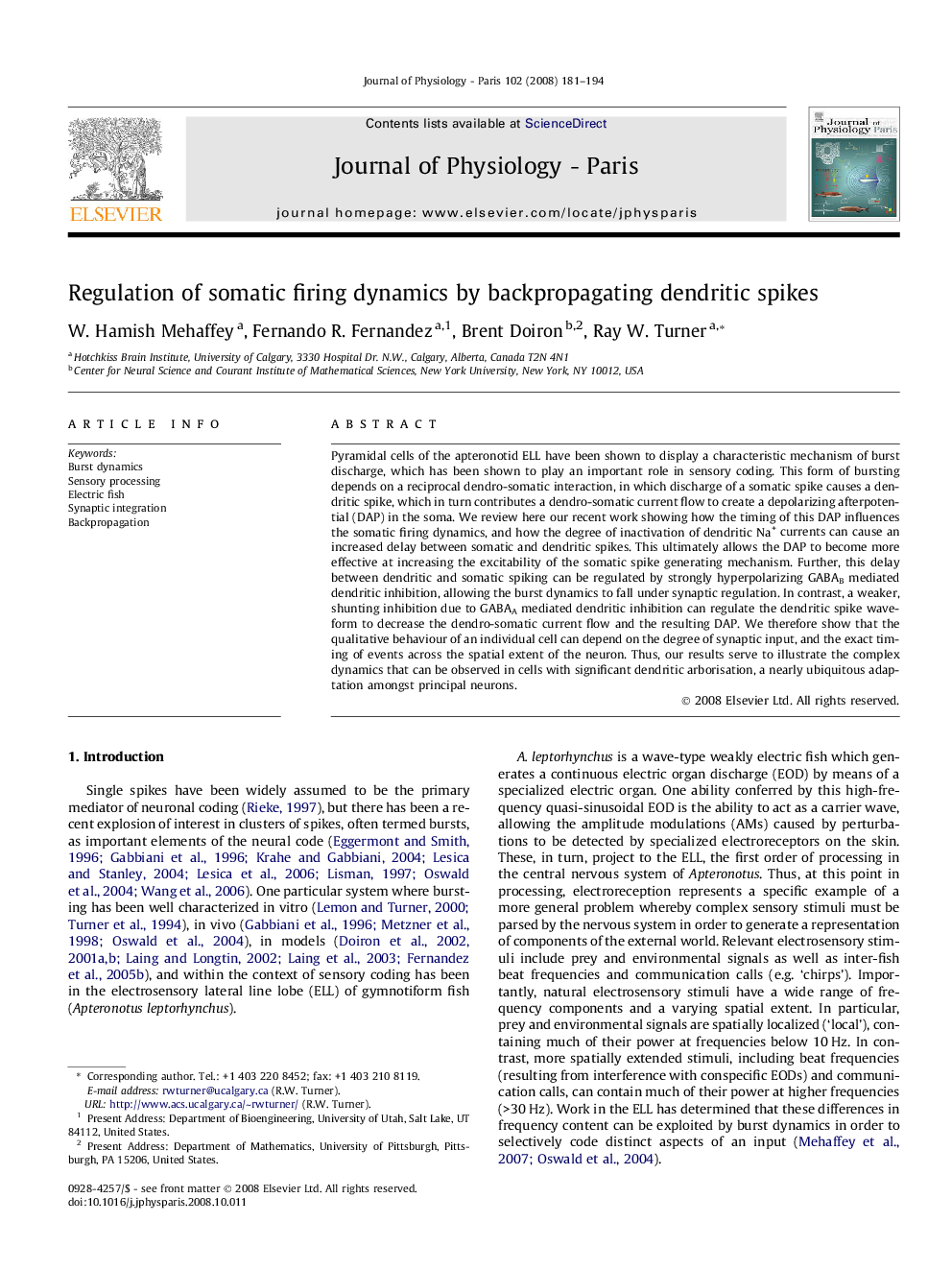| کد مقاله | کد نشریه | سال انتشار | مقاله انگلیسی | نسخه تمام متن |
|---|---|---|---|---|
| 2842485 | 1571035 | 2008 | 14 صفحه PDF | دانلود رایگان |

Pyramidal cells of the apteronotid ELL have been shown to display a characteristic mechanism of burst discharge, which has been shown to play an important role in sensory coding. This form of bursting depends on a reciprocal dendro-somatic interaction, in which discharge of a somatic spike causes a dendritic spike, which in turn contributes a dendro-somatic current flow to create a depolarizing afterpotential (DAP) in the soma. We review here our recent work showing how the timing of this DAP influences the somatic firing dynamics, and how the degree of inactivation of dendritic Na+ currents can cause an increased delay between somatic and dendritic spikes. This ultimately allows the DAP to become more effective at increasing the excitability of the somatic spike generating mechanism. Further, this delay between dendritic and somatic spiking can be regulated by strongly hyperpolarizing GABAB mediated dendritic inhibition, allowing the burst dynamics to fall under synaptic regulation. In contrast, a weaker, shunting inhibition due to GABAA mediated dendritic inhibition can regulate the dendritic spike waveform to decrease the dendro-somatic current flow and the resulting DAP. We therefore show that the qualitative behaviour of an individual cell can depend on the degree of synaptic input, and the exact timing of events across the spatial extent of the neuron. Thus, our results serve to illustrate the complex dynamics that can be observed in cells with significant dendritic arborisation, a nearly ubiquitous adaptation amongst principal neurons.
Journal: Journal of Physiology-Paris - Volume 102, Issues 4–6, July–November 2008, Pages 181–194